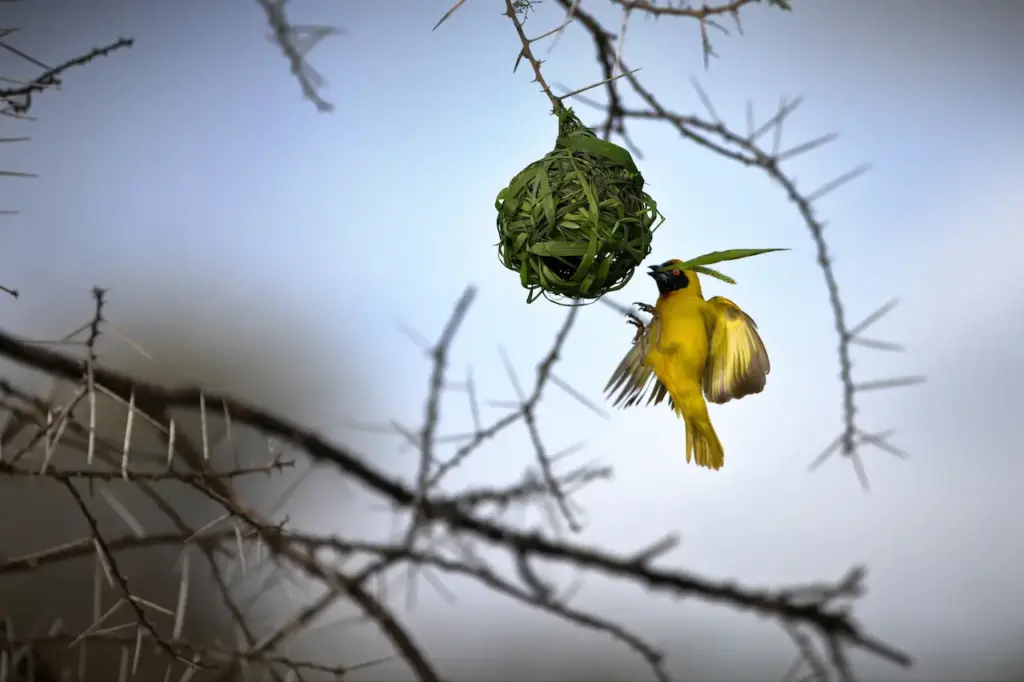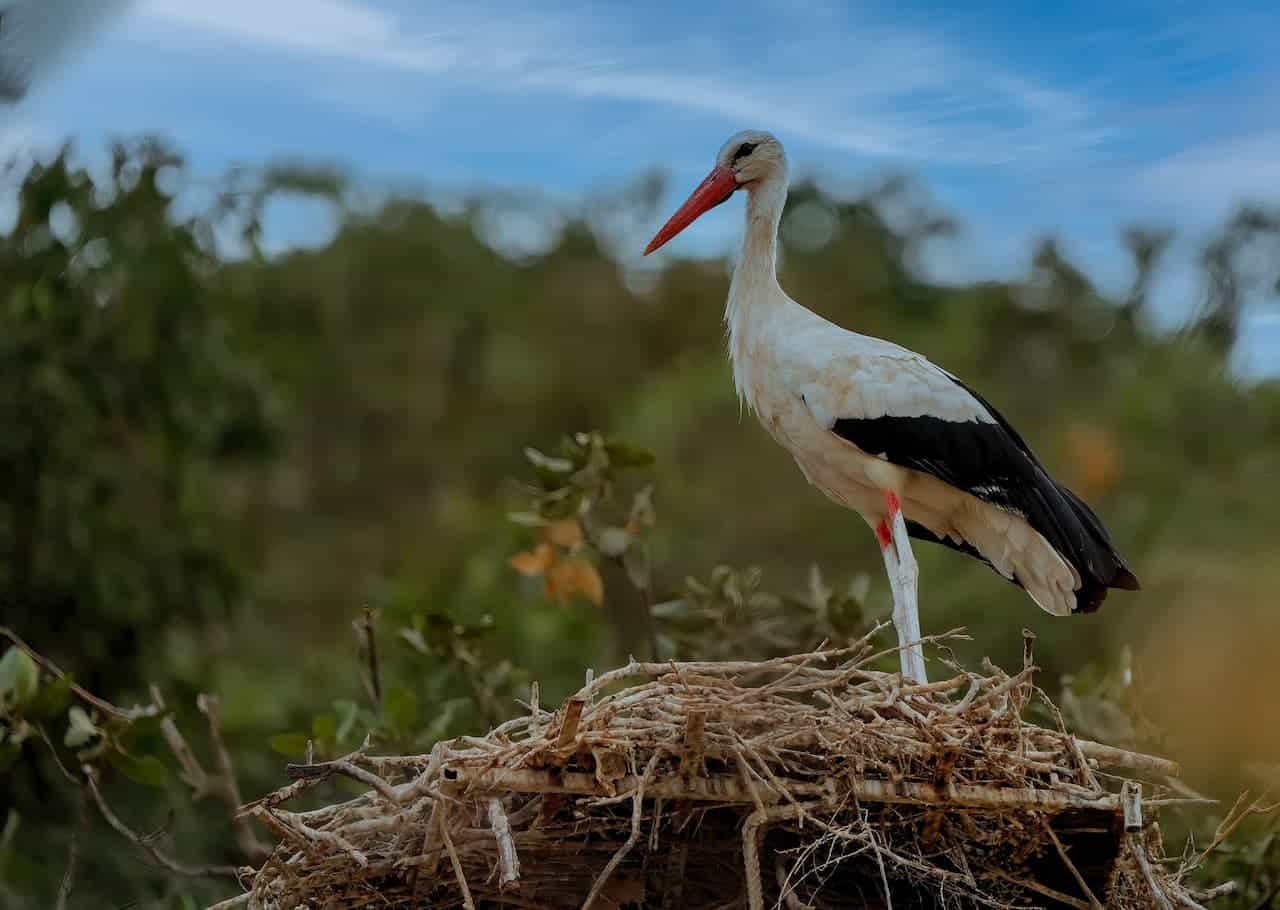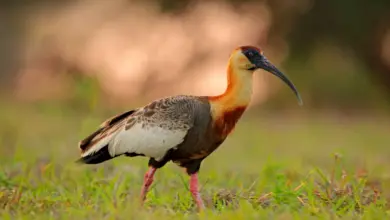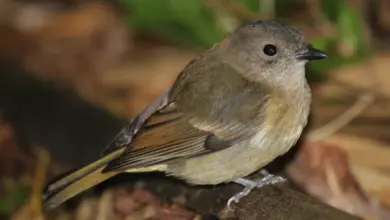The Finn’s Weavers aka Finn’s Baya, Himalayan Weaver, or Yellow Weaver (Ploceus megarhynchus) occurs naturally in two distinct populations found in the Ganges (Uttar Pradesh) and Brahmaputra (Assam) valleys in India and Nepal.
In 1869, this bird was discovered in the town of Kaladhungi in the Nainital district in the Indian state of Uttarakhand by the late Allan Octavian Hume – an amateur ornithologist in British India. Frank Finn recovered this species in the Terai near Calcutta. Eugene William Oates referred to this species as the “Eastern Baya” in 1989, and this bird was first called “Finn’s Baja” in the second edition (1925) of the Fauna of British India.

This weaver appears to be undergoing a rapid and ongoing population decline that is suspected to be caused by the conversion of its favorite terai habitats for agriculture, as well as by trapping of this bird for the cage trade. Several colonies have already disappeared in the last decades. Only about 50 adult birds are believed to still exist in Nepal (C. Inskipp and H. Baral in litt. 2012) and some sources list fewer than 10,000 adults as still being in existence overall. Other estimates are less optimistic and state that only about 3,000 adults or less are likely to have survived in the wild (R. Bhargava per A. Rahmani in litt. 2012). These birds are now only very locally distributed.
Distribution / Habitat
The Finn’s Weavers are found in the terai (grassland areas) of the northern Indian subcontinent in Delhi and northern Uttar Pradesh, India, and adjacent extreme western Nepal. A separate population occurs in eastern Nepal to the Assam region.
- In the state of Assam, they are found in the Kaziranga National Park, the Manas Wildlife Sanctuary. In West Bengal, they are found in the Jaldapara National Park. In northern India, in the Nainital district of Uttarakhand, these birds have been recorded in the Jim Corbett National Park. In Nepal, they are fairly common in the Sukla Phanta Wildlife Reserve, which represents the eastern limit of their distribution.
Their natural habitats are tall grassland, typically swamps covered with Phragmites reeds or Typha, as well as grasslands with Imperata, Narenga, and Saccharum spontaneum and scattered trees.
Subspecies and Ranges:
- Ploceus megarhynchus megarhynchus (Hume, 1869) – Nominate Form
- Range: Northern India in northern Uttar Pradesh, as well as adjacent extreme southwestern Nepal.
- Ploceus megarhynchus salimalii (Abdulali, 1961)
- Range: Northeastern India in West Bengal and Assam. Historically, they were also recorded near salt lakes in the southern part of West Bengal.
Description
Size
This large weaver measures about 6.7 inches or 17 cm in length, including its short, square tail.
Plumage Details / Adults
The breeding males can be identified by their yellow rump, upper tail coverts (feathers), head and underparts, and dark feathers covering the “ears”. The mantle, back, and scapulars (“shoulders”) are heavily streaked.
Females and non-breeding males have a duller plumage, with a more buff-tinged upper plumage – particularly around the crown (top of the head) and nape (back of the neck). Below, they are a paler yellow.
Related Link: Sociable Weavers
Other Physical Details
The pointed, cone-shaped beak is blackish. The legs and feet are flesh-colored.
Similar Species
The Baya Weavers are smaller in size; have shorter, narrower bills, and lack the dark lateral chest patch.
Diet / Feeding
Finn’s Weavers are usually seen foraging in flocks. Their diet mostly consists of various seeds, but they will also take some insects, particularly when breeding or raising young.
Breeding / Nesting
Their breeding season usually begins in May and continues until September. Males may mate with up to 4 females.
Their roundish / globe-shaped nests are woven from thin strips of leaves. Unlike other weavers, the Finn’s Weavers line the entire nest, rather than just the floor. Their nests are typically situated on top of trees, in reeds, or extensive stands of tall grass.
The average clutch consists of 2 – 4 eggs, which are incubated by the female alone for 14 to 15 days to hatching.
Calls / Vocalizations / Sounds
Their song is described as a subdued twit-twit-tit-t-t-t-t-t-trrrrr wheeze whee wee we and their calls as a harsh twit-twit.
Alternate (Global) Names
Chinese: ???? … Czech: Snovac velkozobý … Danish: Himalayavæver … Dutch: Finns / Finse Bayawever … Finnish: Himalajankutoja … French: Tisserin de Finn, Tisserin des Indes … German: Großschnabelweber … Italian: Tessitore di Finn, Tessitore giallo … Japanese: kiirokouyoujaku … Norwegian: Teraivever … Polish: Wiklacz wielkodzioby … Russian: ???????????? ???? … Slovak: Pletiarka velkozobá … Spanish: Tejedor de Finn … Swedish: Himalayavävare
Species Research by Sibylle Johnson
Please Note: The articles or images on this page are the sole property of the authors or photographers. Please contact them directly concerning any copyright or licensing questions. Thank you.




